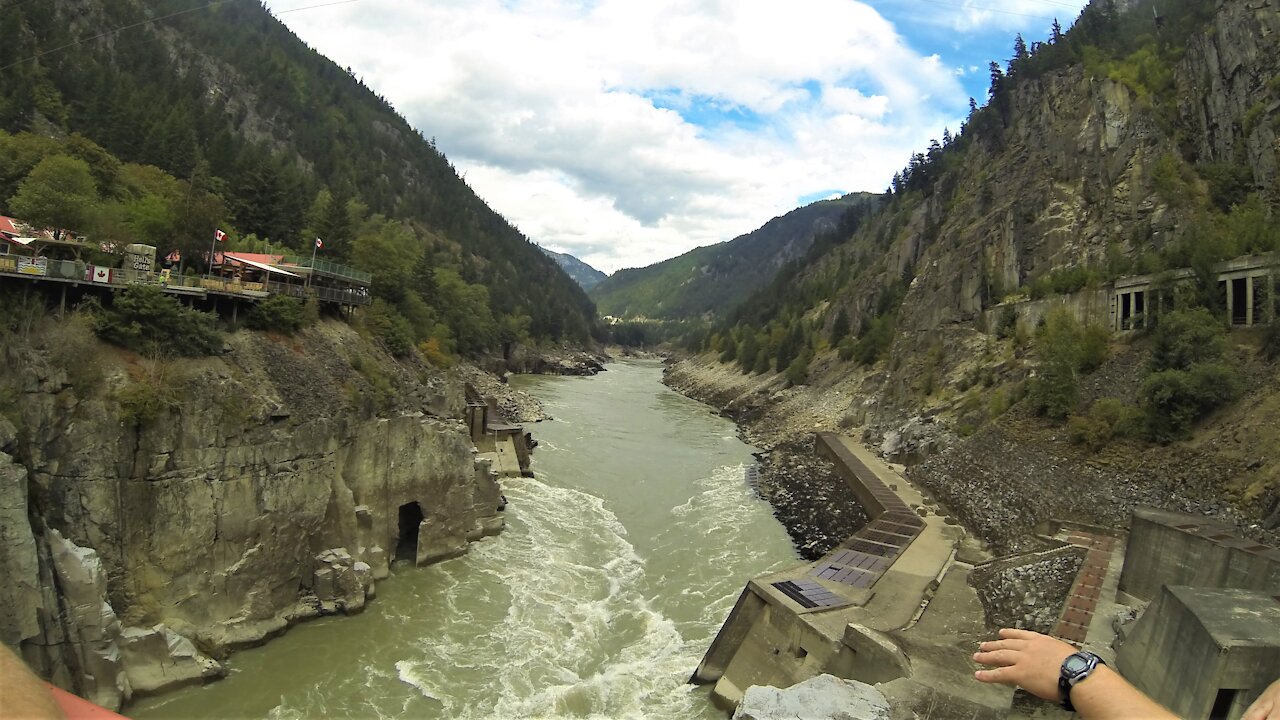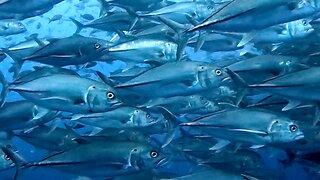Premium Only Content

This pass is called Hell's Gate for good reason
The mighty Fraser River in British Columbia is one of Canada's largest rivers. With a massive water flow and a width that reaches 50km at the mouth, it dumps water into the ocean at a rate that is more than double the entire flow of the Niagara Falls. As one of the natural wonders of the world, Niagara Falls leaves any visitor in complete awe at the sheer power and force of the river, and yet the Fraser River easily tops this in many respects.
There is a narrow canyon pass on the Fraser, aptly named "Hell's Gate". One look at the raging torrent and the steep, sloping walls of the canyon leaves no doubt as to why this name was chosen. The depth of this section of river is an astonishing 64m (211 feet), carved by thousands of years of water erosion. Early explorers tried to navigate this part of the river and they deemed it so treacherous that it must be the gates of hell. It was deemed impassable for boats of any kind. Even getting around the canyon on foot was a monumental task.
Salmon had used this river for many centuries to migrate to their spawning grounds in the head waters above. They could manage the water flow through this narrow cut, although they stopped to rest in the eddies before their struggle to get pas the rapids. This made it ideal fishing grounds for Indigenous people who relied on salmon for their livelihood. European settlers also congregated here and fished in the narrows for their food supply. A gold rush brought even more settlers and the area became a fur trade corridor. It was a prosperous arrangement for all concerned at the time.
The increase in activity brought with it the construction of a railroad in the 1880s. A second line construction began in 1911 and a tunnel was cut into the rock face. Disaster struck when a massive rock slide filled the canyon enough to raise the river bottom 5m (15 feet). This increased the water speed from 5m/s (18km/h, 11mph) to 6.75m/s (24km/h, 15mph). The increase in speed and turbulence caused the salmon to perish due to exhaustion in their attempt to swim through. Many simply didn't make the attempt. This devastated the fish populations and the entire fishing industry.
Attempts were made to remove debris but the effect was not significant. In 1946, fishways were created at various depths, providing the salmon with tunnels that helped them circumvent the most turbulent sections of Hell's Gate. The salmon population rapidly recovered, as did the fishing industry.
The fishways are a marvel of engineering and an undeniable success. The 1.5 million dollars spent on the project was a small price to pay for the ecological and financial value of the salmon.
Hell's Gate is an impressive sight and it is not surprising that the area has become a popular tourist attraction. The history and the magnificence of the gorge make this a place to spend a day while visiting British Columbia.
-
 0:43
0:43
WildCreatures
5 days ago $8.12 earnedDiver is swallowed up by a passing bait ball at Darwin Island
22.1K4 -
 3:59
3:59
geoffius
4 years ago $0.10 earnedChristmas is called that for a reason
2142 -
 11:56
11:56
God is good all the time
4 years ago $0.15 earnedGod is good all the time 239: Called Higher
164 -
 0:44
0:44
WorstAustralianDrivers
4 years agoThere Is A Reason
113 -
 5:51
5:51
Orchid Diary
4 years agoOrchid Diary: One Good Reason to Join an Orchid Society
43 -
 1:04:17
1:04:17
Sean Unpaved
3 hours agoJames Franklin Is Going To REVIVE Virginia Tech! | UNPAVED
16.2K -
 LIVE
LIVE
Viss
5 hours ago🔴LIVE - Completing Quests & Annihilating All in Our Path! - Arc Raiders!
78 watching -
 53:51
53:51
The Rubin Report
4 hours agoBill Maher Obliterates Patton Oswalt’s Liberal Bubble in Only 2 Minutes
51.5K55 -
 LIVE
LIVE
LumpyPotatoX2
4 hours agoWhere Winds Meet: Just Petting Kitties - Made in China
35 watching -
 LIVE
LIVE
ReAnimateHer
20 hours ago $0.83 earnedDBD Shenanigans
63 watching